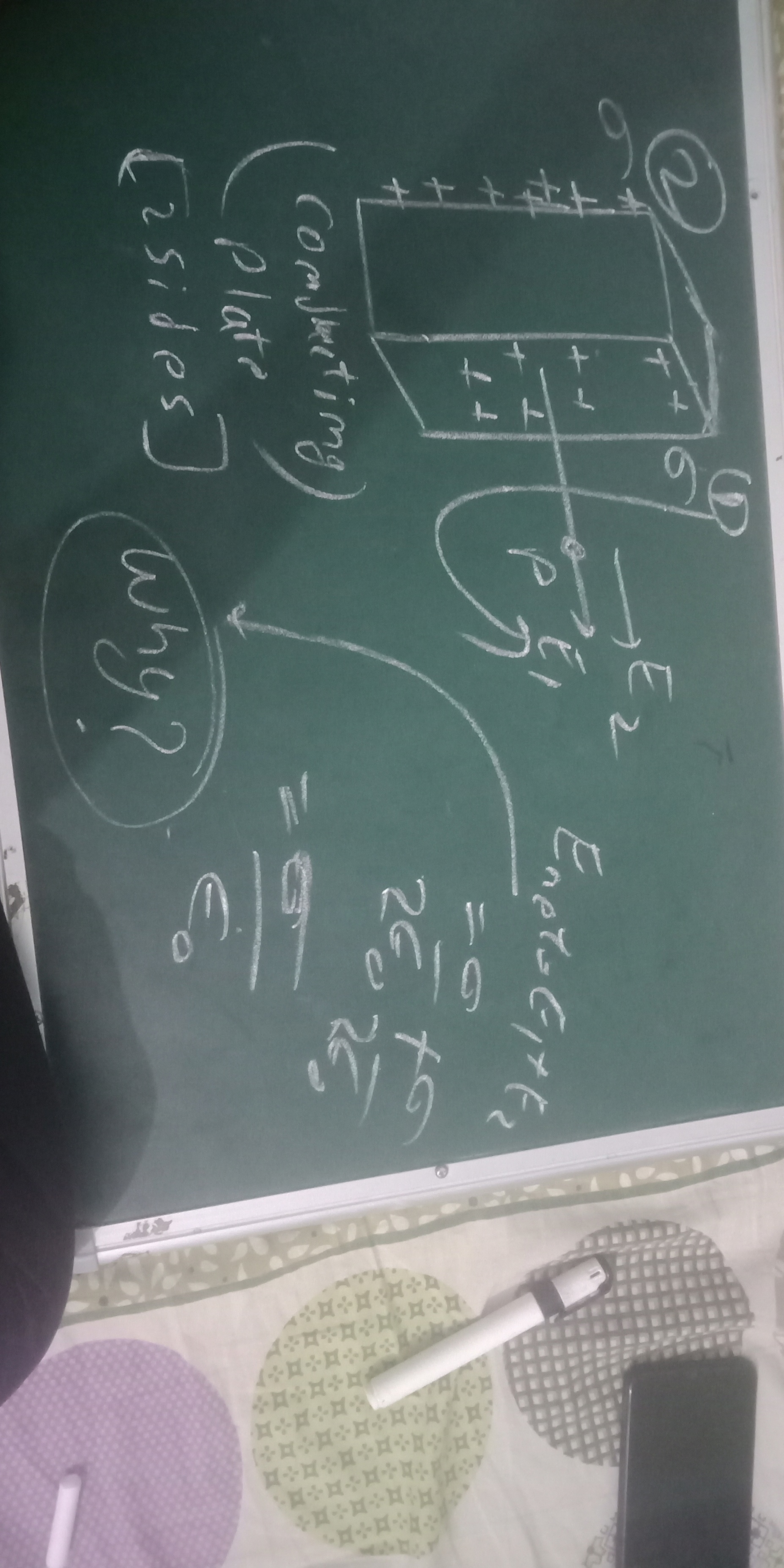I believe you are correct in saying we are not able to superimpose $\vec E_1$ and $\vec E_2$. The expression $\frac{\sigma}{\epsilon_0}$ can be derived from Gauss' Law.
Gauss' Law
States that the electric flux $\Phi_E$ through any closed surface is:
$$\Phi_E = \frac{q}{\epsilon_0} ,$$
where $q$ is the algebraic sum of any enclosed charges. A closed surface can be thought of as any surface completely enclosing a volume, such as a sphere or prism.
Electric Flux
A quantity roughly analogous to the number of field lines passing through a surface. For a uniform electric field, the electric flux through a flat surface is given by the dot product between the electric field $\vec E$ and surface normal $\vec A$:
$$\Phi_E = \vec E\cdot \vec A ,$$
where $\vec A$ is a vector perpendicular to the surface with magnitude equal to the surface area $A$.
Derivation
Consider a closed cylindrical surface with one face at the prism centre and another outside of the prism.
Let face 1 be the circular face inside the prism, face 2 be the rounded face and face 3 be the circular face outside the prism. We now consider the electric flux through each of the 3 faces:
- In static situations, the electric field inside any conductor must be 0 or charges would still be moving. This implies the flux $\Phi_1$ through face 1 is 0.
Assuming the prism is sufficiently large, electric field lines may be assumed parallel and normal to the prism surface, meaning:
Electric field lines are also parallel to face 2, making them perpendicular to the surface normal. The flux $\Phi_2$ through face 2 is thus also 0.
Electric field lines are perpendicular to face 3, making them parallel to the surface normal. The flux $\Phi_3$ through face 3 is thus equal to $EA$, where $A$ is the circular face area.
Finally, in static situations, all excess charge on a conductor lies on the surface. Thus, the charge enclosed within our cylinder is just $\sigma A$. By Gauss' Law, we have:
$$\frac{\sigma A}{\epsilon_0} = EA ,$$
so dividing through by $A$ gives us:
$$E = \frac{\sigma}{\epsilon_0}$$
as required.
I hope this makes sense! I have tried to draw a diagram, but as this is my first time responding to a post, I haven't yet worked out how to do so. This post Electric field due to a charged conductor may help as well.


